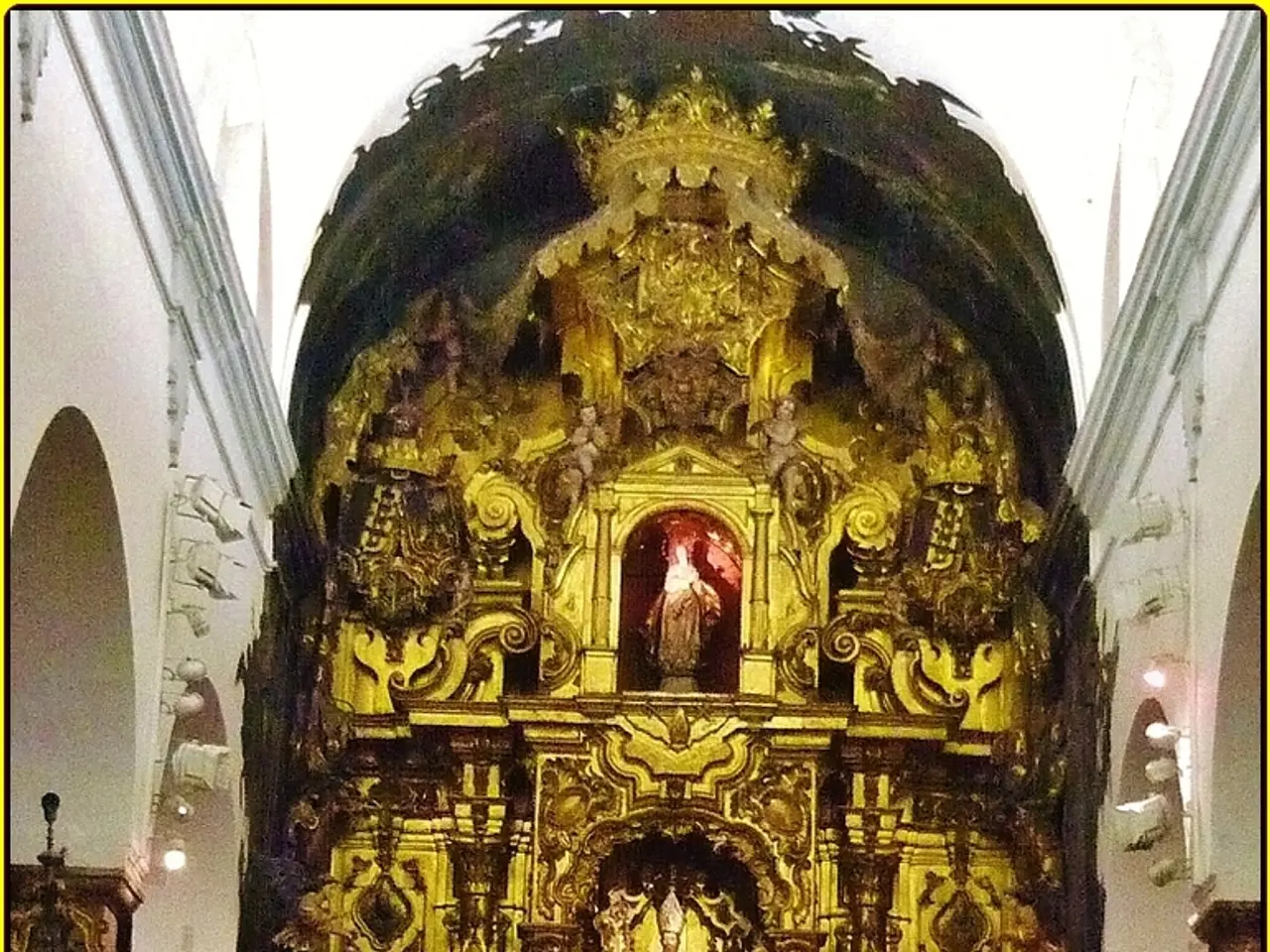A Berlin resident's gesture of surrender takes place within the Carrara marble quarries.
In the heart of Berlin, the 13th Berlin Biennale has begun, and one of the most captivating exhibits is Raul Walch's "Agree to Disagree" at Galerie EIGEN + Art Berlin, Auguststr. 26, running until July 12, open Tue-Sat 11-6 PM. Walch, a Villa Romana scholarship holder, has created an art installation inspired by his experience in Florence, Italy.
Walch's work delves into the global textile industry, with a particular focus on the city of Prato near Florence, historically significant in the textile sector. His installation investigates the hybrid nature of textile materials brought about by globalization, placing it within the context of Tuscan cities like Florence and Prato.
One of Walch's most striking pieces, *Dressing the Wind (Prato)*, features large banners fluttering on seven-meter-high poles, representing the Tuscan landscape and weather. The banners integrate traditional industrial textile patterns combined with hand-painted motifs, symbolically transforming mass-produced textile patterns back into handcrafted art.
The theme behind "Agree to Disagree" reflects contrasts and dialogues between tradition and modernity, local history and global commerce, and the fragile, contradictory nature of the contemporary world. Walch's medially hybrid works—textiles, video, and assemblages—act as a chain of untitled “quotations” reflecting a world that is both fragile and harsh.
Walch's use of textile materials references Florence’s rich historical legacy in art and craftsmanship while engaging critically with its current role in the global textile industry, particularly focusing on Prato's industrial context. He honours the lowly Chinese textile workers who produce Florentine fabrics for Italian high fashion and pays tribute to the city's textile workers of the past, such as Niccolo, a secretly loved stonemason's son who was tragically crushed by a falling block.
The marble used in Walch's installation, Marmo di Carrara, is the same marble used for Michelangelo's renowned sculptures, such as the Bruges Madonna, the Pieta, and the David. Walch stands in the marble quarries of Carrara, reflecting on the history and the labour that went into creating these masterpieces.
The artist is depicted as a surreal "sculpture" in a shell of giant green-blue gingko leaves in Italy, symbolizing longevity, resistance, hope, harmony, happiness, and healing. The flagpoles in the gallery space are carved from bamboo, a material that has been profitably and massively cultivated in Florence since the 19th century.
Meanwhile, in the Old National Gallery, Camille Claudel and Bernhard Hoetger are subjects of an exhibit. Large and small tapestries with floral patterns and text such as "Agree to Disagree" hang on the walls of Walch's exhibit, adding to the overall theme of dialogue and contrast.
Florence, almost as "eternal" in its reverence as Rome, is tourist-packed. Walch, fascinated by the city, is researching what once was in the city. He gazes upon a dense bamboo forest from the Villa Romana that climbs a hill up to a 700-year-old Carthusian monastery.
Michelangelo, who learned the art of sculpture in the gardens of the Medici, which are filled with olive, lemon, orange trees, laurel shrubs, and dreamlike sculptures, later carved the horned Moses and slaves for the Julius tomb from the Marmo di Carrara.
Walch's "Agree to Disagree" exhibition ties the deep-rooted artistic traditions of Florence with the realities of industrial production and the complexities of globalized markets, offering a nuanced reflection on place, industry, and identity in the contemporary era. Visitors to the exhibit are invited to engage with the installations and consider the contradictions and dialogues between tradition and modernity, local history and global commerce, and the fragile, contradictory nature of the contemporary world.
[1] "Raul Walch: Agree to Disagree" (2023). Retrieved from [2] "Raul Walch" (2023). Retrieved from
- Raul Walch's "Agree to Disagree" exhibit, showcased in Berlin, incorporates a unique blend of 'lifestyle' and 'travel', as his art installation delves into the global textile industry, an exploration largely inspired by his sojourn in Florence, Italy, thus merging 'cultural-travel' elements with contemporary commentary.
- In the heart of Berlin, Walch's exhibit presents an artform that seamlessly bridges 'of a kind used' textile materials from Florence with intricate hand-painted motifs, transforming mass-produced patterns into handcrafted art, thereby offering a vivid reflection of the hybrid nature of textiles in today's globalized world.





